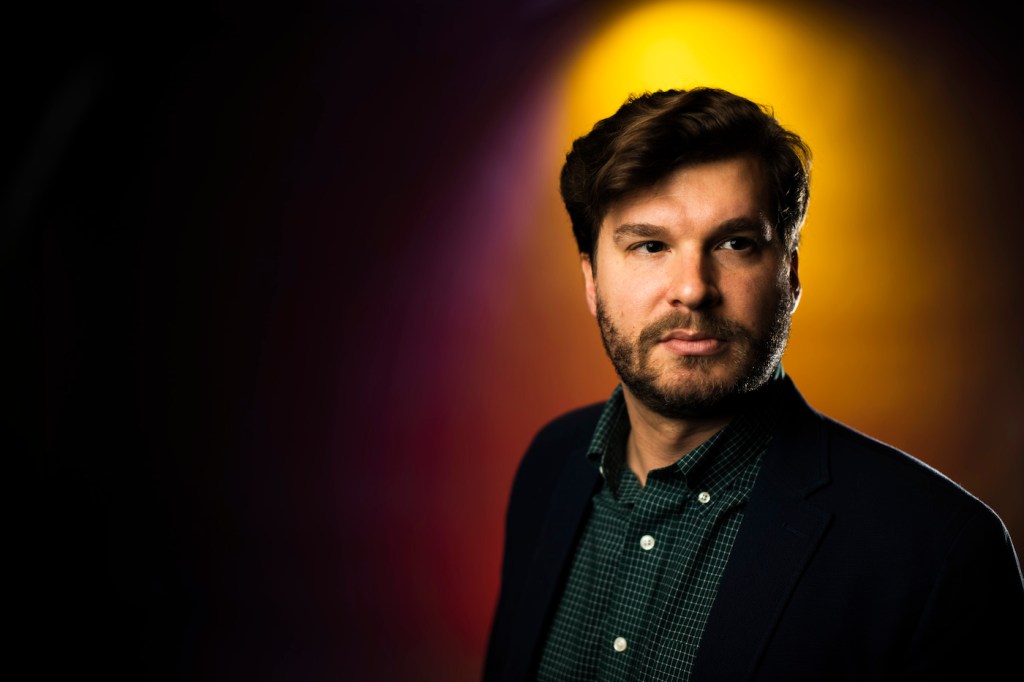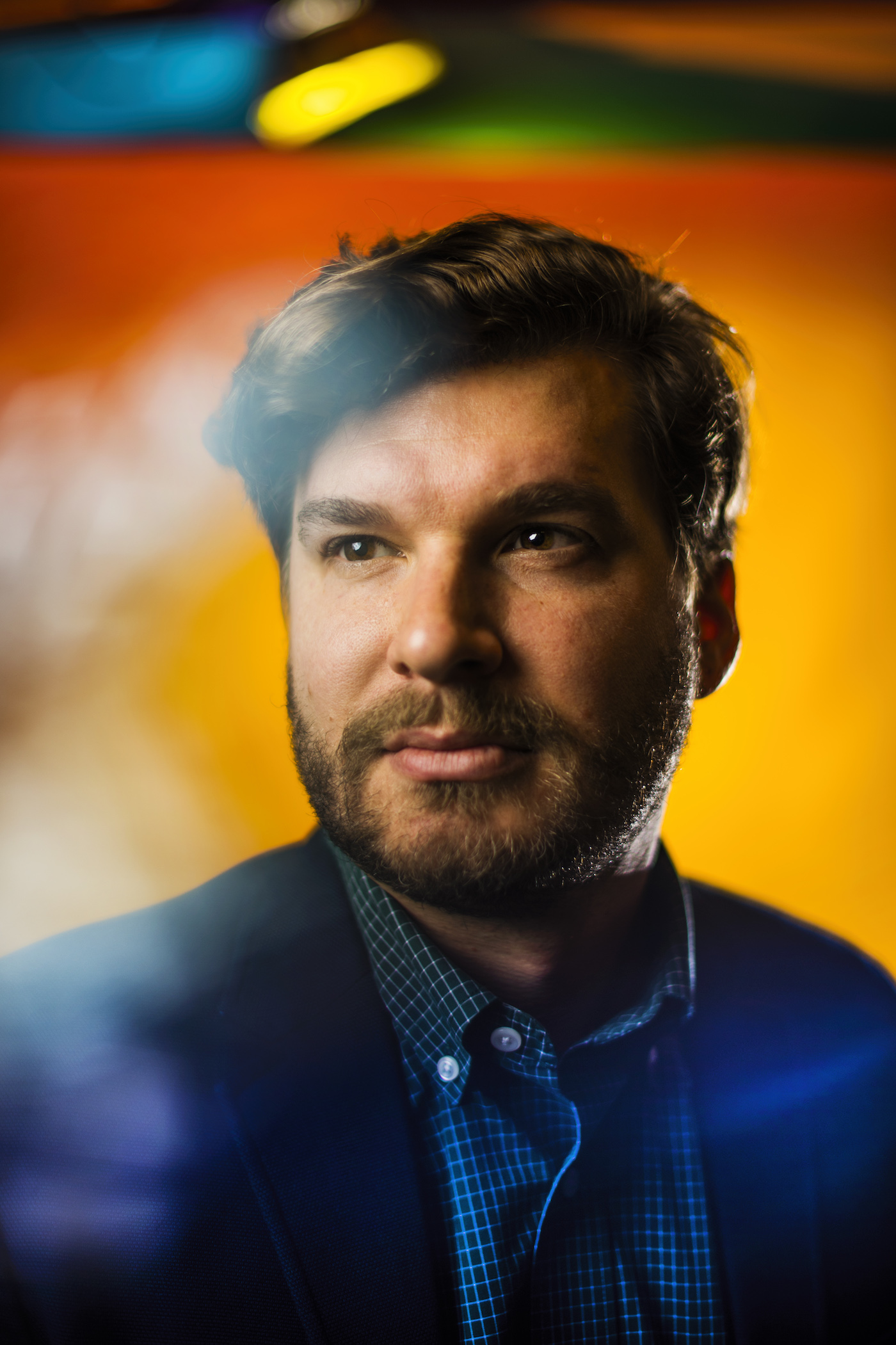Professor puts research into action to stop spread of disease

When comparing chefs to scientists, most people associate the former with being “creative” and the latter with being “rigorous.” But Samuel Scarpino doesn’t buy it. He’s a scientist with a passion for cooking, and he sees parallels between the two occupations.
“I think in science, yes, you do have to have a deep technical understanding of the craft. But part of it is the ‘ah-ha’ moments, the creativity that we’re deploying to see how different things we’re all working on might be related to each other,” said Scarpino, a newly appointed faculty member in the College of Science, as well as the Department of Marine & Environmental Sciences. He earned his doctorate in ecology of evolution and behavior at the University of Texas at Austin and joins Northeastern from the Santa Fe Institute, where he completed his postdoctoral research.
I think in science, yes, you do have to have a deep technical understanding of the craft. But part of it is the ‘ah-ha’ moments, the creativity that we’re deploying to see how different things we’re all working on might be related to each other.
Samuel Scarpino
The chance to be creative and collaborative is a major reason Scarpino chose Northeastern. He’s part of the Network Science Institute, which brings students and research teams from diverse backgrounds together to tackle complex societal challenges. “It gave me the opportunity to work across multiple departments in a really interdisciplinary way that many universities are still not embracing,” Scarpino said.
Cross-disciplinary collaboration is critical to Scarpino’s research. His lab studies the transmission of disease as well as the spread of ideas about disease and how those ideas affect how people respond. For example, how does an individual’s social network impact their understanding of illness risk? How might the news sources one chooses to follow influence whether they get a vaccination?
Scarpino creates mathematical and computational models that link directly to public health and clinical practice. The Centers for Disease Control and Prevention used his team’s algorithm to inform the placement of surveillance sites during a Chikungunya virus outbreak in Puerto Rico. He worked with the Ministries of Health in Sierra Leone and Liberia to simulate the Ebola virus reporting rate. Scarpino and his postdoc have partnered with the Vermont Oxford Network of hospitals to study how infant transfer patterns affect care and outcomes. Each of these projects exemplifies research translated to action.
“I think our continued ability to interface with public health decision-makers and policymakers and clinicians has been the thing that I’m proudest of,” Scarpino said.

“Being a part of this program is fantastic, both from the perspective of having the best undergraduate, graduate students and post-docs, but then also having my students embedded in the kind of environment where they’re collaborating and socializing with students who are also the best in the world.” Photo by Adam Glanzman/Northeastern University
Most recently, Scarpino examined the Zika virus outbreak and found that sexual transmission of Zika has been drastically underestimated.
“We’ve known since well before the outbreak started in the Caribbean, Central and South America, and places in the U.S. that Zika can be sexually transmitted. It’s just always thought to have been of secondary importance to mosquito transmission,” Scarpino said. But new research shows the risk of negative effects for infants might be higher if the disease is sexually transmitted, rather than transmitted by mosquitos. And most critically, ignoring sexual transmission will hinder scientists’ ability to accurately model Zika’s spread.
“It’s going to affect both the total number of cases and also the chances the disease is maintained endemically, meaning there is local transmission over long periods of time. That’s especially true in countries like the U.S. where it’s unlikely that Zika would be maintained endemically via mosquito-born transmission,” Scarpino said.
In continuing his work to model the spread of diseases, Scarpino knows he’s at the right place.
“The Network Science Institute at Northeastern is the best in the world,” Scarpino said. “Being a part of that program is fantastic, both from the perspective of having the best undergraduate, graduate students and post-docs, but then also having my students embedded in the kind of environment where they’re collaborating and socializing with students who are also the best in the world.”





